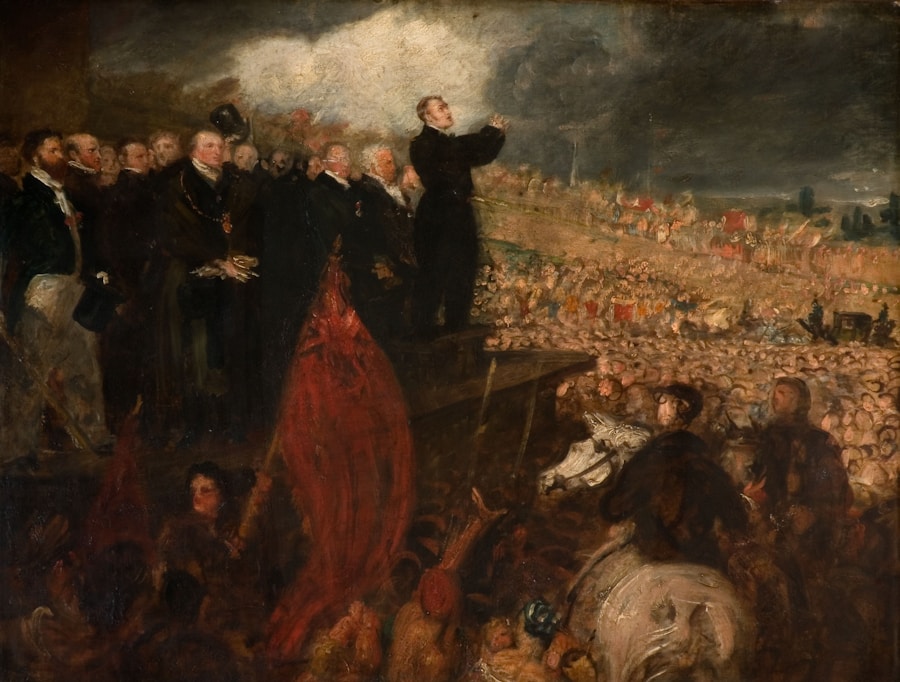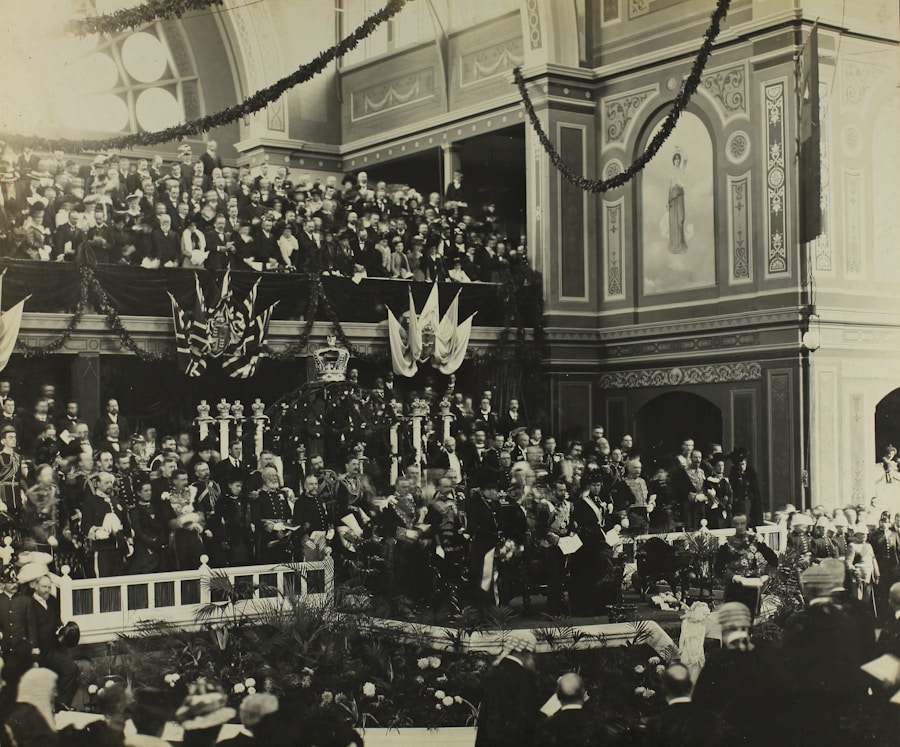The 1857 Rebellion, often referred to as the Sepoy Mutiny or the First War of Indian Independence, marked a significant turning point in the history of British colonial rule in India. This uprising was not merely a spontaneous revolt by discontented soldiers; it was a complex amalgamation of various grievances that had been simmering for decades. The immediate catalyst for the rebellion was the introduction of the Enfield rifle, which required soldiers to bite off the ends of greased cartridges rumored to be made from animal fat, offending both Hindu and Muslim religious sentiments.
However, this incident was merely the spark that ignited a broader discontent among various sections of Indian society, including peasants, artisans, and even some princely states. The rebellion began in Meerut on May 10, 1857, when Indian soldiers, or sepoys, revolted against their British officers. The unrest quickly spread to other parts of northern India, including Delhi, Kanpur, and Lucknow.
The uprising was characterized by fierce battles, brutal reprisals, and a significant loss of life on both sides. While the British ultimately quelled the rebellion by early 1858, the events of that year would have lasting repercussions for India and its relationship with Britain. The rebellion is often viewed as a precursor to the larger independence movement that would eventually culminate in India gaining freedom in 1947.
Key Takeaways
- The 1857 Rebellion, also known as the Indian Mutiny or the First War of Independence, was a significant event in Indian history that had far-reaching impacts.
- The economic and social impact of the rebellion led to widespread destruction of infrastructure and loss of life, as well as changes in land ownership and agricultural practices.
- The rebellion had a profound political impact, leading to the end of the East India Company’s rule and the beginning of direct British control over India.
- The cultural and religious impact of the rebellion was significant, as it led to a resurgence of Indian nationalism and a renewed sense of identity and pride.
- The legacy and long-term effects of the rebellion can still be seen today, with ongoing debates and controversies surrounding its causes, significance, and impact on Indian history.
Economic and Social Impact of the 1857 Rebellion
The economic ramifications of the 1857 Rebellion were profound and far-reaching. In the immediate aftermath of the uprising, British authorities implemented punitive measures that devastated local economies. The British response involved not only military reprisals but also a systematic dismantling of local governance structures.
This led to widespread destruction of property and infrastructure, particularly in regions that had been centers of resistance. Agricultural production plummeted as landowners were either killed or fled, leading to food shortages and famine in several areas. The British government’s focus shifted towards consolidating control rather than fostering economic development, which further exacerbated poverty and dislocation among the Indian populace.
Socially, the rebellion catalyzed significant changes in Indian society. The uprising brought together diverse groups—Hindus and Muslims, peasants and zamindars—who had previously been divided by caste and class. This unprecedented unity among different communities highlighted the potential for collective action against colonial rule.
However, the aftermath of the rebellion also saw a hardening of communal identities as British policies increasingly favored divide-and-rule tactics to maintain control. The social fabric of India was irrevocably altered as mistrust grew between communities that had once coexisted more harmoniously. The British response to the rebellion included not only military suppression but also social engineering aimed at reinforcing divisions among Indians.
Political Impact of the 1857 Rebellion

The political consequences of the 1857 Rebellion were monumental in reshaping British colonial policy in India. Following the suppression of the uprising, the British government dissolved the East India Company and assumed direct control over India through the Government of India Act 1858. This marked a significant shift from corporate rule to direct imperial governance, fundamentally altering the political landscape of India.
The British Crown established a new administrative framework that sought to integrate Indian elites into governance while simultaneously reinforcing British authority. Moreover, the rebellion prompted a reevaluation of British strategies in India. The British recognized that their previous approach—characterized by economic exploitation and cultural insensitivity—had contributed to widespread discontent.
In response, they initiated reforms aimed at co-opting Indian leaders and addressing some grievances. This included limited political concessions such as the introduction of legislative councils that included Indian members. However, these reforms were often superficial and did not address the underlying issues of representation and autonomy that many Indians sought.
Cultural and Religious Impact of the 1857 Rebellion
Culturally, the 1857 Rebellion had a profound impact on Indian identity and nationalism. The uprising became a symbol of resistance against colonial oppression and inspired a sense of pride among Indians. Literature and art from this period began to reflect themes of heroism and sacrifice associated with the rebellion.
Figures like Rani Lakshmibai of Jhansi emerged as cultural icons, representing not only resistance but also a burgeoning sense of national identity that transcended regional and communal boundaries. Religiously, the rebellion had complex implications for Hindu-Muslim relations in India. Initially, the uprising saw collaboration between different religious communities united against a common enemy—the British colonial regime.
However, as the rebellion was suppressed, narratives began to emerge that framed it as a communal conflict rather than a unified struggle for independence. The British utilized these narratives to justify their rule and implemented policies that exacerbated communal divisions. This shift had long-lasting effects on inter-religious dynamics in India, contributing to tensions that would later manifest in various forms throughout the 20th century.
Legacy and Long-term Effects of the 1857 Rebellion
The legacy of the 1857 Rebellion is multifaceted and continues to resonate in contemporary discussions about Indian nationalism and identity. While it was ultimately unsuccessful in achieving its immediate goals, it laid the groundwork for future movements against colonial rule. The rebellion is often viewed as a precursor to organized nationalist movements that emerged in the late 19th and early 20th centuries, such as those led by figures like Bal Gangadhar Tilak and Mahatma Gandhi.
These leaders drew inspiration from the spirit of resistance embodied by those who fought in 1857. Furthermore, the rebellion prompted a rethinking of colonial policies that would shape British governance in India for decades to come. The British learned that military might alone could not suppress dissent; they needed to address some underlying grievances if they were to maintain control over such a vast territory.
This led to a series of reforms aimed at co-opting Indian elites into governance structures while simultaneously attempting to placate popular discontent through limited concessions. However, these measures often fell short of addressing deeper issues related to autonomy and representation.
Debates and Controversies Surrounding the 1857 Rebellion

The 1857 Rebellion has been subject to extensive debate among historians regarding its characterization and significance. Some scholars argue that it should be viewed primarily as a nationalistic uprising aimed at overthrowing colonial rule, while others contend that it was more a series of localized revolts driven by specific grievances rather than a unified national movement. This divergence in interpretation reflects broader questions about how history is constructed and remembered.
Additionally, there are controversies surrounding the portrayal of key figures involved in the rebellion. For instance, Rani Lakshmibai is often celebrated as a symbol of female empowerment and resistance; however, her legacy is complicated by her role within a feudal system that perpetuated social hierarchies. Similarly, figures like Bahadur Shah II, the last Mughal emperor, are viewed through different lenses—some see him as a legitimate leader fighting for sovereignty, while others view him as a relic of an outdated order unable to adapt to modern political realities.
The debates surrounding the 1857 Rebellion also extend into discussions about its representation in popular culture and education. How this pivotal event is taught in schools or depicted in literature and film can shape national identity and collective memory. As India continues to grapple with its colonial past, interpretations of the rebellion remain contentious, reflecting ongoing struggles over identity, power, and historical narrative in contemporary society.
In a related article, Exploring the Philosophies of Tagore and Radhakrishnan: Humanism, Religion, and the Purpose of Life, the authors delve into the philosophical ideas of Rabindranath Tagore and Sarvepalli Radhakrishnan, exploring themes of humanism, religion, and the meaning of life. This article provides a deeper understanding of the philosophical underpinnings that influenced thinkers during the time of the 1857 debate.
FAQs
What was the impact of the 1857 revolt in India?
The 1857 revolt, also known as the Indian Rebellion of 1857, had a significant impact on India’s history. It led to the end of the East India Company’s rule in India and the beginning of direct rule by the British Crown. It also sparked a wave of nationalism and resistance movements against British colonial rule.
How did the 1857 revolt impact British rule in India?
The 1857 revolt led to the dissolution of the East India Company and the transfer of power to the British Crown. This marked the beginning of direct British rule in India, known as the British Raj. The British government also implemented various policies to consolidate their control and prevent future uprisings.
What were the long-term effects of the 1857 revolt?
The 1857 revolt had long-term effects on India’s political, social, and economic landscape. It fueled the growth of Indian nationalism and anti-colonial movements, eventually leading to India’s independence in 1947. The revolt also influenced the British government’s policies towards India and the administration of the country.
How did the 1857 revolt impact the Indian society?
The 1857 revolt had a profound impact on Indian society. It led to the breakdown of traditional social structures and the rise of new political and social movements. The revolt also sparked debates and discussions about Indian identity, culture, and the relationship with the British colonial rulers.























+ There are no comments
Add yours